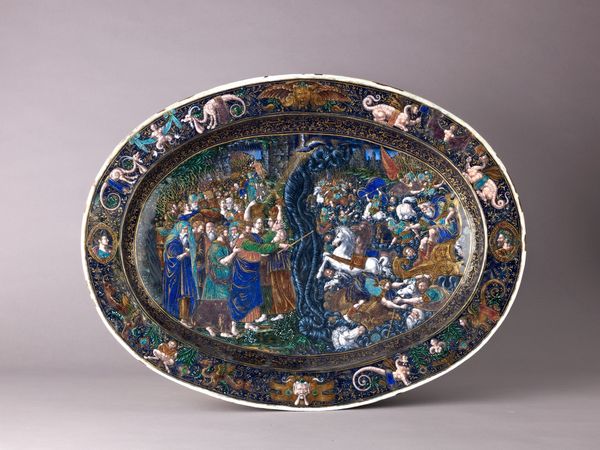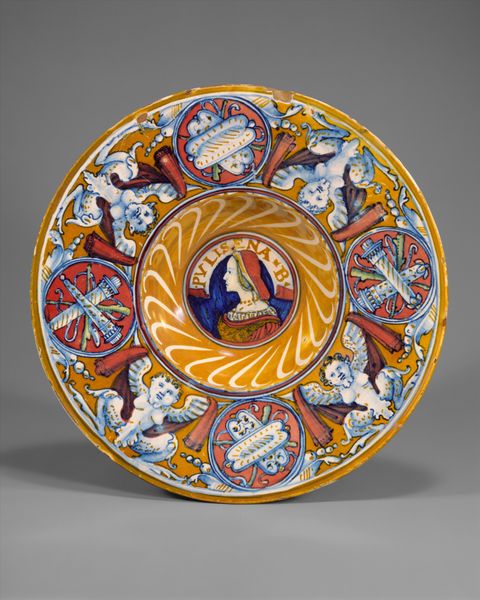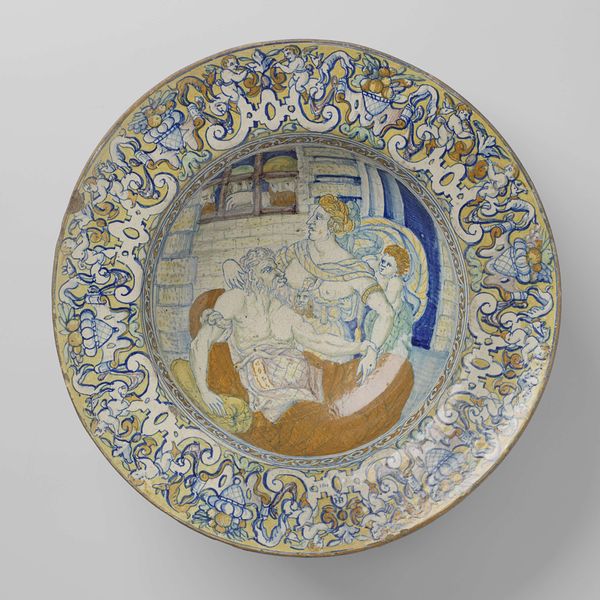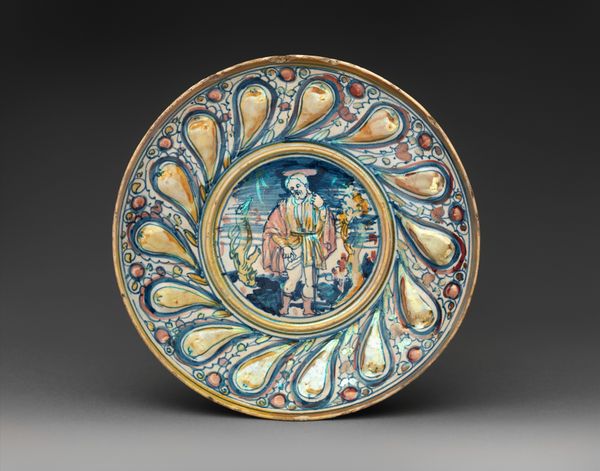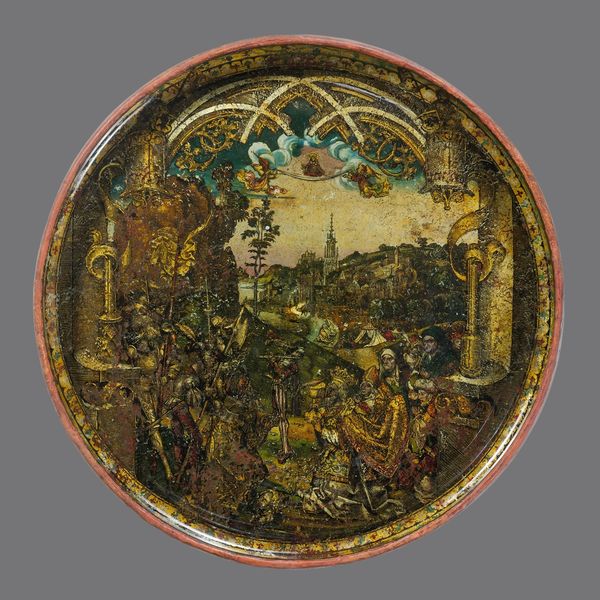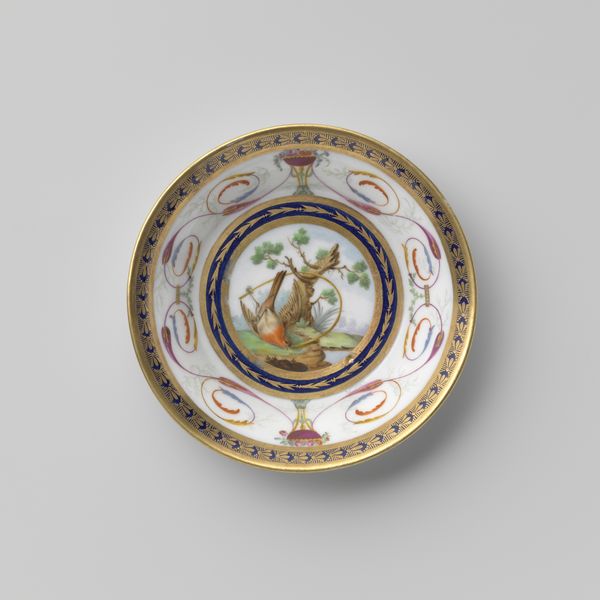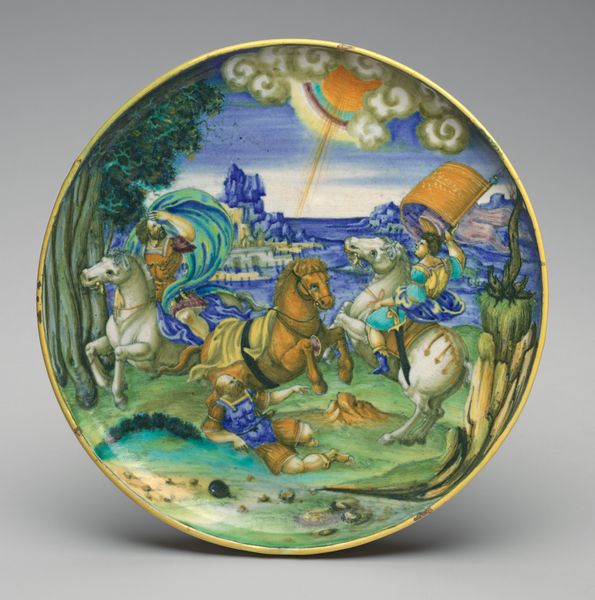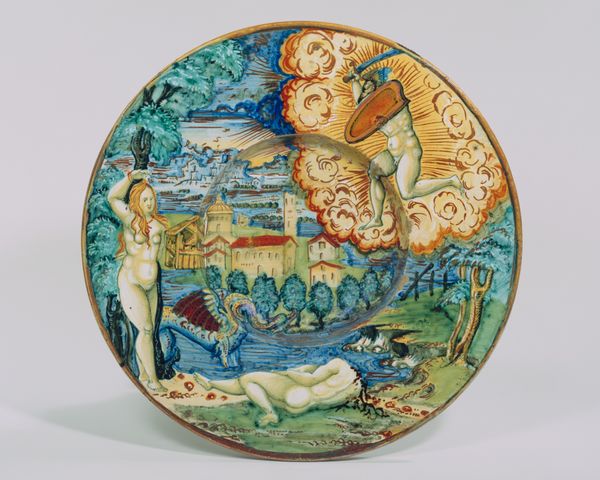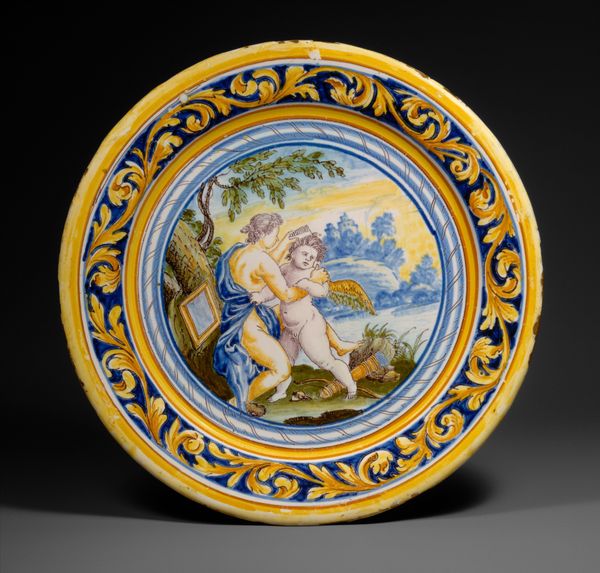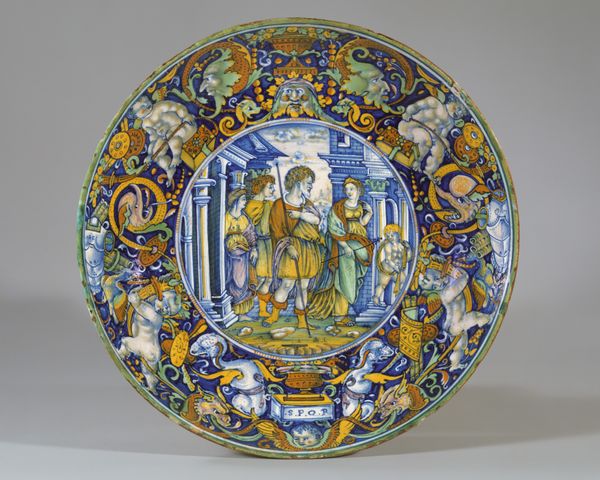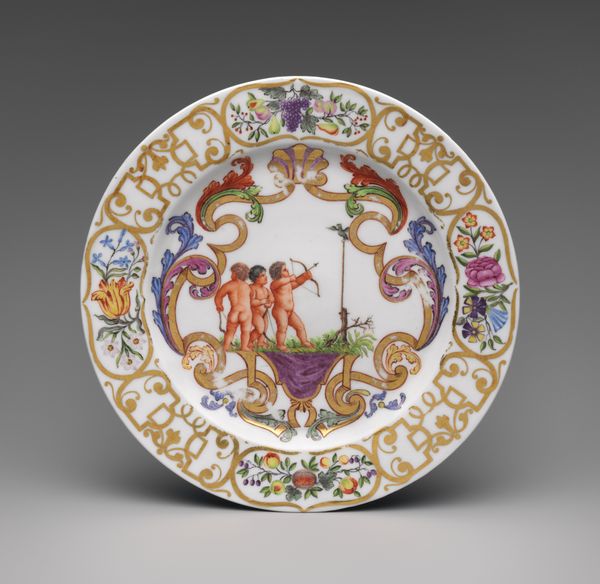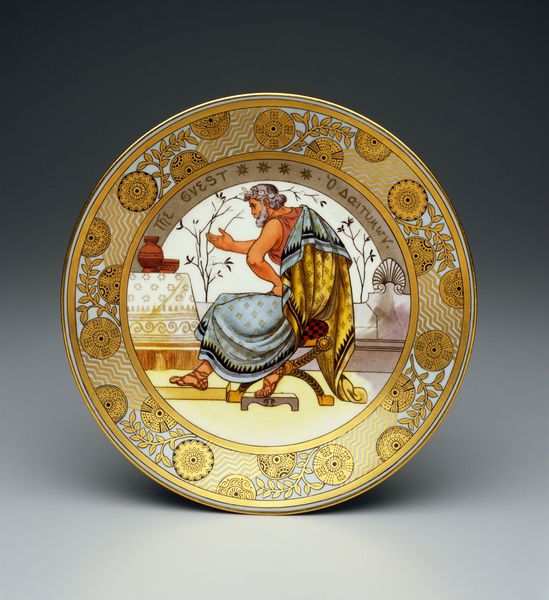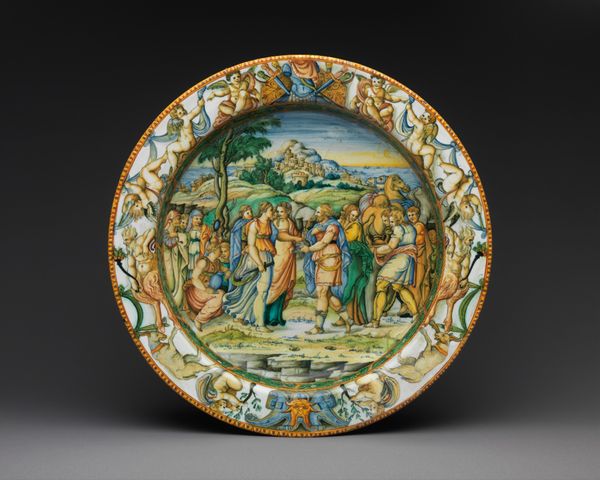
Table top depicting Aurora and the Chariot of Apollo 1822
0:00
0:00
tempera, painting, ceramic, sculpture
#
portrait
#
neoclacissism
#
allegory
#
tempera
#
painting
#
landscape
#
ceramic
#
classical-realism
#
figuration
#
sculpture
#
horse
#
men
#
line
#
history-painting
#
decorative-art
#
watercolor
Dimensions: Diameter (top only, confirmed): 37 in. (94 cm); Overall (assembled as table, confirmed): 20 1/2 × 38 1/4 × 38 1/4 in. (52.1 × 97.2 × 97.2 cm)
Copyright: Public Domain
Curator: Let's consider this tabletop, "Aurora and the Chariot of Apollo," created by Gioacchino Barberi in 1822. At first glance, it is beautiful, but how does its creation as decorative art alter our understanding? Editor: It's striking how this classical scene, usually reserved for grand paintings or sculptures, is rendered on what’s essentially a functional object. What can we infer about its original purpose, or perhaps, its value to its owner? Curator: Precisely. Think about the materials: tempera and ceramic. Why ceramic? Was it easily sourced? Durable? Also, consider who commissioned it. Was this for personal enjoyment, or for display to impress guests? The ceramic material, far from traditional canvas, positions this object firmly within a sphere of craft and applied arts rather than "high art”. It begs the question, who benefited from the production, and who had access to consume the object itself? Editor: That’s a good point, it being ceramic probably dictated the design to some extent as well as informing its cultural use. Thinking about production, was it a singular artisan or a workshop involved? How does the reproduction affect its aura? Curator: A single artisan is possible, though we can't dismiss the influence of workshops, which standardized techniques. The context of early 19th century Europe, with emerging industrial processes and growing bourgeois markets, cannot be understated. Editor: This makes me look at this object as both artistic and industrial endeavor, and brings to my attention all that can be overlooked if approaching artworks through art history analysis without the aid of materialism and its focus on production. Thank you. Curator: Indeed, seeing art through the lens of materiality unveils not just its aesthetic qualities, but the socioeconomic networks that breathed life into it.
Comments
No comments
Be the first to comment and join the conversation on the ultimate creative platform.
